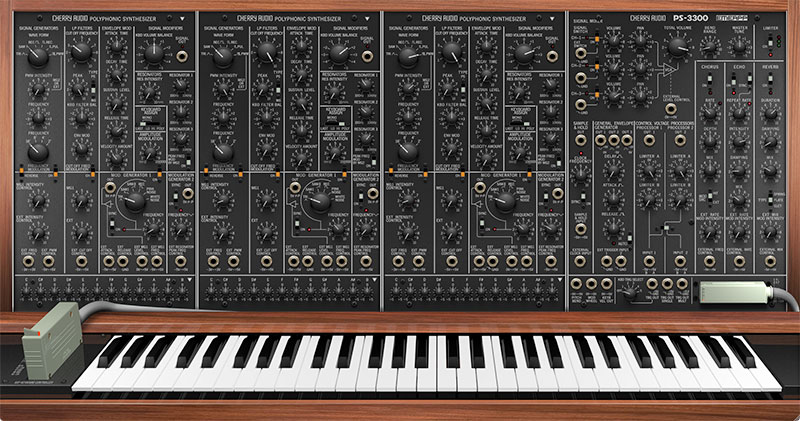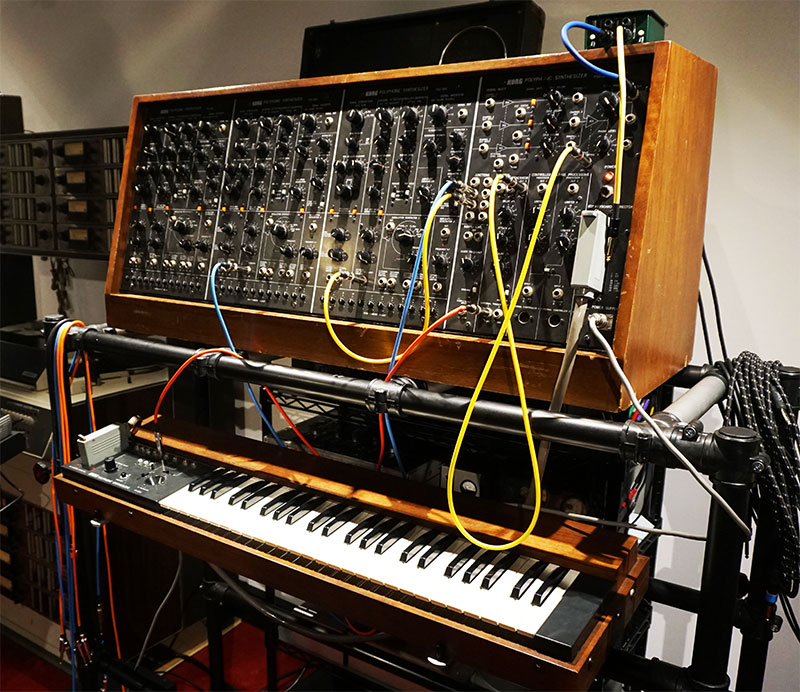
The Korg PS-3300 was an absolute beast of synthesizer. The largest and most complex of Korg's PS series (P=polyphonic, S=synthesizer), these incredibly rare instruments utilized a brute-force pre computer-chip approach to polyphonic analog synthesis. It's estimated that just 20-50 were produced during its 1977 - 1981 production run.
Like transistor organs and Moog's Polymoog, polyphony was implemented via a divide-down oscillator scheme. Prior to the advent of microcomputer chips, this was the only feasible approach to produce a polyphonic instrument. PS-3300's divide-down synthesis makes use of twelve high-frequency square-wave oscillators, each tuned to a high octave of each chromatic scale note. Their frequencies are iteratively halved by logic chips to produce consecutively lower-octave square waves at the correct frequencies for all keyboard notes. This allows full polyphony (i.e. no limit of how many notes may be played simultaneously), but these must be "waveshaped" to create saw or variable-pulse waves. Individual waveshaping circuitry is required for each of PS-3300's 48 keys. Similarly, the original PS-3300 incorporated an individual voltage-controlled filter and envelope generator for every key! Korg did their best to simplify these circuits, but as you might imagine, this required an insane amount of circuitry.
For increased flexibility, Korg implemented hardware patch points for signal routing. However, these were for mono audio and control signals only, as there was no provision for routing polyphonic control signals - this would have required cables like the massive multi-pin connector cable that attaches the keyboard to the main synthesizer cabinet.
Although the immense quantity of controls appears imposing, the PS-3300 can be thought of as three separate single-oscillator polyphonic synths (the three voice panels at the left of the cabinet) plus a master section (the right side panel) that includes a mixer, additional "mono" processing modules (sample & hold, an additional utility envelope generator, CV processors, and effects). The nifty part is that because the three voice panels are fully-independent, the programming possibilities for stacked sounds are immense.

Cherry Audio has been fortunate to forge a relationship with the Electronic Music Education and Preservation Project (EMEAPP) in Philadelphia, PA. By their own description, EMEAPP is, "A privately held world-class curated collection of rare vintage electronic instruments - a learning center, through research projects, creative endeavors, media programming and tours, enlightening many people along the way."
Translated for us synth-heads, EMEAPP is possibly the largest and most mind-blowing collection of incredible electronic instruments you'll ever witness. Please support them!

EMEAPP allowed us unfettered access to their mint, original PS-3300 which we carefully probed and recorded to create the most accurate emulation possible. (plus a few, "hey, can you check what it does when you do this???" follow up emails)
–––––––––––––––––––––––
Technical Assistance
Cherry Audio's unique online store and automatic updating should make operation a smooth experience, but if you run into any issues or have questions, you can discuss issues online at the Cherry Audio forums at:
https://forums.cherryaudio.com/
... or you can communicate directly with one of our outgoing and friendly tech support staff at:
https://cherryaudio.kayako.com/
We really encourage you to reach out to our support staff before going to <insert-angry-forum-here>... our staff is really on top of their game and they'll take care of ya!